San Sebastián Bernal/Ezequiel Montes municipality, Querétaro 作者: 来源: 发布时间:2021-03-20
1. Basic data
Pop.: 3000 (aprox., Bernal); 34,729 (Ezequiel Montes)
Area: 298.28 km2
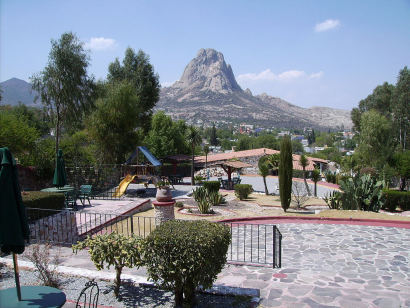
Bernal location in Mexico within the state of Querétaro
https://goo.gl/maps/vzJowZH5o69QK7F6A
2. Natural geography
It has mostly grasslands and mesquite trees, there are small buttresses of thorny deciduous forest. Its main species are: organ, nopal, cardón, ñonfi, brush, maguey and aloe.
The fauna consists of species such as rattlesnake, coral reef, pig's trunk, alicante, rabbit, hare, skunk, screamer, buzzard, woodpecker, owl, owl and bat.
http://www.elclima.com.mx/ezequiel_montes.htm
Weather
It is temperate semi-dry with an average annual temperature of 16.7 ° C. During the months of April to May the highest average temperature is recorded, 32.5 ° C. Temperatures below zero are recorded on average during the months of December to January with 0 to -2 ° C.
Average annual rainfall is 287 mm. The rains are more abundant during the months of May to October. There are severe droughts from November to April that unbalance agricultural production.
Getting there and around
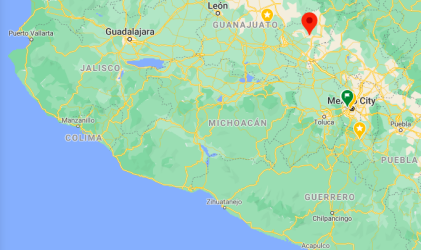
There are 3 ways to get from Mexico City to Ezequiel Montes by bus, car or plane.
Grupo Flecha Roja operates a bus from Tepotzotlán (a locality close to Mexico City) to Ezequiel Montes hourly. Tickets cost $180 - $260 and the journey takes 2h 20m. Alternatively, Aeroméxico flies from Mexico City to Ezequiel Montes 3 times a day.
A plane from Mexico City to Queretaro International Airport costs between 1500 and 3000 pesos, depending on the schedule and the amenities.
There are also bus tours with premade routes and visits to Bernal, some of the Vineyards in the municipality, and Tequisquiapan, which is another pueblo mágico inside Ezequiel Montes.
https://www.rome2rio.com/s/Mexico-City-Airport-MEX/Ezequiel-Montes
3. Economy
The GDP in 2010 was of 2 619.2 millions of MXN.
https://dialnet.unirioja.es/descarga/articulo/4954700.pdf
4. Industry
Agriculture
Ezequiel Montes has been the pride of Queretaro for its fertile and generous lands, which due to its climate the production is favored, dedicating itself mainly to the crops of sorghum, corn, beans, wheat and alfalfa, in addition to the products of the vine. The viticulture has prospered and collaborated in the economic activity of the municipality, with three wine-producing estates: Viñedos La Redonda, heir to the old hacienda agricultural system, De Cote, a wine-producing house focused on minimizing its environmental impact and whose cultivation methods they are free of fertilizers, pesticides and other chemicals, and Freixenet de México, which produces sparkling wine based on the Champenoise method of bottle fermentation, developed by Dom Perignon in France in the 17th century.
Cattle raising
Livestock is the main economic activity in Ezequiel Montes, with cattle fattening standing out: the municipality covers 90% of that in the state. Ezequiel Montes ranks second in selling meat to the Federal District, as well as sales to neighboring municipalities and to the states of Hidalgo and Mexico. The local livestock association has more than 300 farmers affiliated with 157,000 head of cattle (zebu, creole and beef master), including fattening cattle and dairy cattle, as well as 25,000 pigs, 10,000 sheep, 3,000 goats. and 3,000 equines.
Industry
It mainly covered the exploitation of banks of lime, sand and opal. In recent years, the activity has diversified with the installation of five clothing maquiladora companies, a spice processing company, a plastic products company and two plants that produce balanced feed for livestock. There are also others of less importance, the manufacture of furniture and metal-mechanics.
Sport
Derived from the extensive cattle ranching in the area, the charrería is daily life and sport among the inhabitants. The charros of Ezequiel Montes hold the state runner-up, a ninth regional place and a third place in the State of Mexico. The local Lienzo Charro is one of the best in the region.
5. Touristic sites
Peña de Bernal
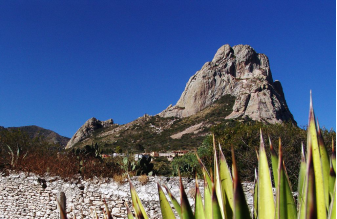
The most visited tourist attraction in Ezequiel Montes is located in the town of Bernal. It is the third largest monolith in the world which contains great mysticism and is linked to pre-Hispanic beliefs and traditions. The Otomí-Chichimeca people had a great connection with the nature that surrounded them, this includes the rock to which they went to bring offerings to ask for the arrival of the rains and praise their gods. It was named one of the 13 Natural Wonders of Mexico and a Protected Natural Area. The town of Bernal, full of traditions and legends, crafts and sweets, is flooded with tourists on the equinoxes looking for mystical connections. La Peña de Bernal has aroused the interest of scientists, artists, filmmakers, writers and even ufologists.
Vineyards
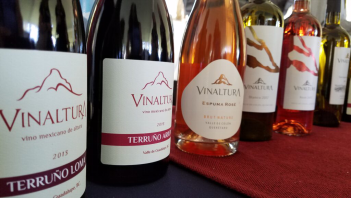
Queretaro wineries planted their vineyards between 6200-7000 ft elevation which leads to hot days and cool nights. This drastic swing in temperature (between 30-50 degrees) creates beautiful wines with higher acidity.
Rain during the harvest season and varying terrain lead to unique challenges for winemakers in Queretaro. Some vines do better than others like the thick-skinned Malbec, Syrah and Merlot while others struggle to produce like Pinot Noir. The wine region of Queretaro is still fairly new with most vineyards under 20 years old. There’s been a big push for enotourism within the last decade, and we’ve watched how this burgeoning wine region has grown just in the past two years.
Mexico is not a wine drinking country like France or Italy, but interest in wine is growing. Winemakers balance a fine line of fruit forward wines that complement Mexican food. Steak lovers may opt for more oak aging, and the younger generation like the sweeter wines, but Queretaro wineries are pushing for wines that can be drunk solo on a sunny day or with spicy pozole.
https://www.epicureanexpats.com/wine-region-of-queretaro/
Casa Museo del Dulce
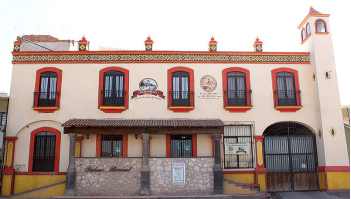
Among other things, Bernal is famous for its sweets made from goat's milk such as wafers and custard. This is where the sweets are made, but there is also a museum that tells the story of the making of these traditional sweets. Throughout a tour that begins in an old kitchen, the beginnings of the typical sweet will be explained, from pre-Hispanic times, the fusion with the colonial to its current preparation. At the end you can taste the main product: the custard.
A beautiful tour that you will enjoy from beginning to end, through its different rooms, starting with our welcome room, "Peña de Bernal" Pueblo Mágico, Museo Casa del Dulce. "You will immediately learn the importance of Mexican Cuisine and its legacy as "Heritage of Humanity." Later you will arrive at the 3rd section, "Pre-Hispanic Mexico and the colony, miscegenation and the wealth of sweets", there you will be able to appreciate the past, reflected in different objects and products, you will be surprised with what we will show you and you will surely want to imagine more.
In our 4th. section or room, "Current Mexico, art and tradition", will be a world full of colors and artistic forms, which will wrap you on a journey of knowledge and pleasure, the "Art-Object" as a sign of the evolution of creativity in its different ways, you will enjoy going to the past and living in the present ..!
Finally, you will reach our 5th. And last section, there awaits you our viewer, fascinating room, where you can see through a glass our working chamber, where some of our delicious traditional sweets are made, ready to be tasted.
https://www.dulcesbernal.com/museo
Tercera Generación Apiaries
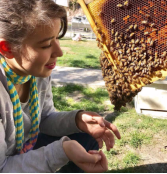
In this place you can take a guided tour to learn how honey and royal jelly are extracted. You will learn the history of beekeeping, and then put on the right suit to visit the apiary and live with the bees and interact with the machines to extract honey, you will taste more than 5 products derived from honey. Finally, you will visit the store with culinary, cosmetic and medicinal products.
You will also have the opportunity to discover and try the different products we have for you while enjoying the benefits that bees bring to them.
https://www.zonaturistica.com/que-hacer/queretaro/bernal/3a-generacion
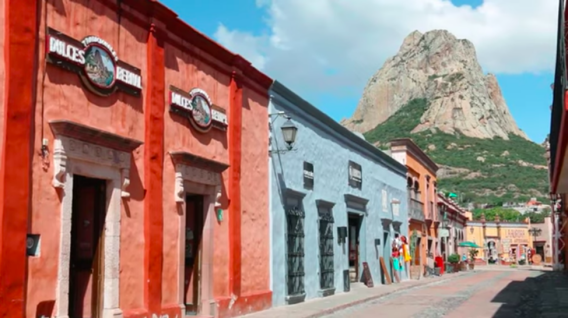
A MUST-VISIT MEXICAN VILLAGE // Peña de Bernal, Querétaro, Mexico
https://youtu.be/IGt6l-A5X-c
6. History and Culture
Ezequiel Montes had his origin in a ranch called Corral Blanco, which was made up of eight families. It should be noted that since then, even being a ranch, it was already an outstanding community in trade.
As a result of the "Lerdo Law" of June 25, 1856, projected by Don Miguel Lerdo de Tejada, which orders the confiscation of assets of civil and ecclesiastical corporations, after the War of Reform, Julián Velázquez Feregrino bought the Corral ranch Blanco to the Brotherhood of San Nicolás de Tolentino belonging to the Parish of San Pedro and San Pablo of the then Villa de Cadereyta, settling there together with his children, where he built the first house on the corner of the current streets of Belisario Domínguez and Av Juárez.
This ranch had been nationalized because it belonged to the brotherhood of San Nicolás Tolentino from the parish of San Pedro and San Pablo de Cadereyta, Qro. The extension of Corral Blanco encompassed everything that today is the center of the Municipal Headquarters and was so called because the walls that delimited it were made of tepetate stone or limestone.
The event of the assault on September 20, 1861 was considered to be the cause of the founding of Corral Blanco, today the city of Ezequiel Montes. On that date, the Velázquez family held a party attended by family and friends. Unfortunately, at dusk they were assaulted by vandals from the region. This mishap caused Don Julián to invite his visits to live in Corral Blanco, offering them a plot of land as a gift. The first families that came to live on the ranch, thus beginning the colonization of Ezequiel Montes, were those of Don Julián Vega, administrator of the ranch; Pedro Vega, from Los Cuates; José María and Pedro Montes Hernández, from the Los Encinos ranch; Prof. Marcelino García, from Bernal; Félix Trejo Reséndiz, administrator of the Tunas Blancas farm; Maximiliano Ocampo and the family of Mr. Juan Montes.
In those first years of life, economic activities were blacksmithing, agriculture, trade and livestock; Thus, in a short time, it became an important trading center as it was an obligatory passage between the North and the South of the state.
On January 12, 1881, the construction of the first church began but its promoters, Don Julián Velázquez Feregrino and Don Pedro Montes Hernández, died shortly after and the church was left unfinished. In 1905 Mr. Joaquín Vega Díaz, local authority, with the enthusiastic help of the people, completed the construction of the temple dedicated to Our Lady of Guadalupe.
With the collaboration of the neighbors, in 1915 the construction of the Municipal Pantheon began, under the direction of Mr. José María Velázquez Montes, who died that same year and, irony of fate, was buried there.
In 1918, at the initiative of deputies Roberto Nieto and Luís de Ocampo, it was given the name of "Villa de Ezequiel Montes", title of Delegation belonging to the current Municipality of Cadereyta de Montes; being its first Delegate Mr. Gumersindo Montes. In this same year the construction of the Primary school that bears the name of Don Julián Velázquez began, which was inaugurated by the then Governor of the State, Mr. Joaquín de la Peña. In 1923 the dam was built, a work directed by Don José Guadalupe Trejo Vega and the Delegate Porfirio Vega, promoting the urbanization of the town.
In 1923, a light plant and a private nixtamal mill were installed and in 1934 the first public garden was built on the temple's cemetery. On April 24, 1941, by decree number 55 of the Legislature of the State of Querétaro, Ezequiel Montes was declared a Free and Sovereign Municipality, the first Municipal President being Mr. Prócoro Montes Dorantes, with Villa Progreso and Villa Progreso as Delegations. Bernal and as sub-delegations to Los Pérez, Jagüey Grande, Las Rosas, El Ciervo and Los Velázquez.
In 1942 the building of the Municipal Presidency was inaugurated, which currently houses the Municipal Auditorium. In 1947 the introduction of drinking water was achieved, when Ezequiel Velázquez Vega (1946-1949) was Municipal President; Furthermore, the National Campaign for the Eradication of Foot-and-Mouth Disease was established, of great importance due to the livestock nature of the municipality.
In 1956, during the administration of C. Ezequiel Velázquez Vega, the board was demolished and construction of the current "Adolfo López Mateos" garden began on that surface. A year later the electric power network was inaugurated. In 1959 the construction of the Divine Providence Parish began.
In 1967 the first Secondary School was built and opened. In 1970 the current Municipal Palace was inaugurated. Between 1973 and 1976 the Preparatory School began work.
Villa Bernal
Bernal was considered as a New Spain frontier during the seventeenth century and still until the eighteenth century. The word Bernal comes from the Basque vernal (with v), which means place of stones or rocks. Bernal was the border with the territory of La Gran Chichimeca until the middle of the 18th century; territory of which Jonaces and Pames put up tenacious resistance to the colonization undertaken by the Spanish.
The town of Bernal, of Basque origin, was born in 1647. Its founders came from Cadereyta de Montes, called by some landowners to defend them from the constant attacks that the Chichimecas and Bronco Indians inflicted on them. This is how Lieutenant Alonso Cabrera, accompanied by three of his eldest sons and seven soldiers, settled in a place that allowed them to observe the movements of the Chichimecas that ravaged the place and that came down from Cerro El Zamorano and Cerro de San Martín. . The founders built "the barracks" that still exists to house the soldiers who would be in charge of guarding the region.
Later new families settled, and constructions were developed, forming a beautiful town. The second building was in a place now known as the Puerto neighborhood; the third was a "presidio", one of whose towers was completed at the beginning of the present century, while the second was never built, as was the second level of arches that on the ground floor are known as the "royal houses". This unique building that resembles a castle, practically unknown in any town in the state, gives lordship and respect to the place. There are even large houses with an age that varies between 200 and 300 years. Likewise, you can see other constructions with portals and arches in their interiors that speak of the dedication and cultural degree of its inhabitants.
By the year 1725, the Congregation of San Sebastián Bernal was declared, the date on which the construction of its three-nave temple began. The first mass was celebrated in 1733 by R.P. Fray José de Luca and it was not until 1835 that it was erected in Vicaría. The patron saint San Sebastián was born in Narbonne, France, assaulted in Rome in 188 and the population celebrates him every January 20. The devotion to San Sebastián Mártir arises from the founding of the town since the settled military brought his image with them, making their sympathy for him well known.
http://www.inafed.gob.mx/work/enciclopedia/EMM22queretaro/municipios/22007a.html
7. Contact Information
City Mayor: Elvia Montes Trejo

Contact number: +52 (441) 277 0096
Govt. Office Address: Belisario Domínguez 104, Ezequiel Montes, Querétaro.
Twitter: https://twitter.com/montes_2018
Instagram: https://www.instagram.com/ezequielmontes.qro.gob
Website: https://www.ezequielmontes.gob.mx/
